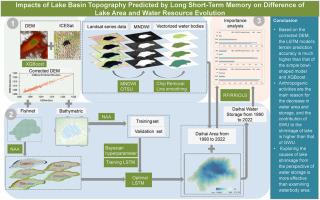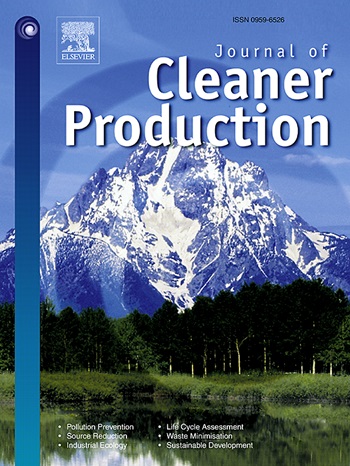Impacts of lake basin topography predicted by long short-term memory on difference of lake area and water resource evolution
IF 9.7
1区 环境科学与生态学
Q1 ENGINEERING, ENVIRONMENTAL
引用次数: 0
Abstract
Exploring lake basin topography and analyzing the driving mechanisms of lake evolution are of great significance for ecological conservation. To simulate Daihai's topography and compare the driving mechanisms of the lake area and water storage (WS), this study utilized Extreme Gradient Boosting (XGBoost) to correct the Digital Elevation Model (DEM) of the lake. Subsequently, the Long Short-Term Memory (LSTM) neural network model was utilized to delineate the topography of Daihai, constructing a time series of WS from 1990 to 2022. Furthermore, the Random Forest was used to assess the impacts of the de Martonne Aridity Index, Precipitation Intensity, Surface Water Resource Utilization (SWU), and Groundwater Resource Utilization (GWU) on Daihai's area and WS from a watershed perspective. The results demonstrate that, based on the corrected DEM, the LSTM model's terrain prediction accuracy (RTK mean absolute error MAE = 0.71 m) is much higher than that of the simple bowl-shaped model (MAE = 6.23 m) and XGBoost (MAE = 1.41 m). From 1990 to 2022, SWU contributed 0.58 and 0.75 to the shrinkage of Daihai's area and WS, respectively, while GWU contributed 0.38 and 0.22 to the shrinkage of area and WS, respectively. Compared to WS, during the shallow water shrinkage stage, the area tends to overestimate the primary factors and underestimate the secondary factors. In contrast, during the deep water shrinkage stage, it underestimates the primary factors and overestimates the secondary factors. Exploring the causes of lake shrinkage from the perspective of WS allows for a comprehensive consideration of the impact of topography on lake shrinkage.

长短期记忆预测湖盆地形对湖泊面积差异和水资源演变的影响
探索湖盆地形、分析湖泊演变的驱动机制对生态保护具有重要意义。为了模拟岱海地形,比较湖泊面积和蓄水量(WS)的驱动机制,本研究利用极端梯度提升(XGBoost)技术对岱海数字高程模型(DEM)进行了修正。随后,利用长短期记忆(LSTM)神经网络模型对岱海地形进行了划分,构建了从 1990 年到 2022 年的岱海蓄水量时间序列。此外,还利用随机森林从流域角度评估了德马通干旱指数、降水强度、地表水资源利用率(SWU)和地下水资源利用率(GWU)对岱海面积和WS的影响。结果表明,基于修正后的 DEM,LSTM 模型的地形预测精度(RTK 平均绝对误差 MAE=0.71 m)远高于简单碗状模型(MAE=6.23 m)和 XGBoost(MAE=1.41 m)。从 1990 年到 2022 年,SWU 对岱海面积和 WS 的缩减贡献分别为 0.58 和 0.75,而 GWU 对岱海面积和 WS 的缩减贡献分别为 0.38 和 0.22。与 WS 相比,在浅水萎缩阶段,面积往往会高估主要因子而低估次要因子。相反,在深水萎缩阶段,它低估了主要因子,高估了次要因子。从 WS 的角度探讨湖泊萎缩的原因,可以全面考虑地形对湖泊萎缩的影响。
本文章由计算机程序翻译,如有差异,请以英文原文为准。
求助全文
约1分钟内获得全文
求助全文
来源期刊

Journal of Cleaner Production
环境科学-工程:环境
CiteScore
20.40
自引率
9.00%
发文量
4720
审稿时长
111 days
期刊介绍:
The Journal of Cleaner Production is an international, transdisciplinary journal that addresses and discusses theoretical and practical Cleaner Production, Environmental, and Sustainability issues. It aims to help societies become more sustainable by focusing on the concept of 'Cleaner Production', which aims at preventing waste production and increasing efficiencies in energy, water, resources, and human capital use. The journal serves as a platform for corporations, governments, education institutions, regions, and societies to engage in discussions and research related to Cleaner Production, environmental, and sustainability practices.
 求助内容:
求助内容: 应助结果提醒方式:
应助结果提醒方式:


